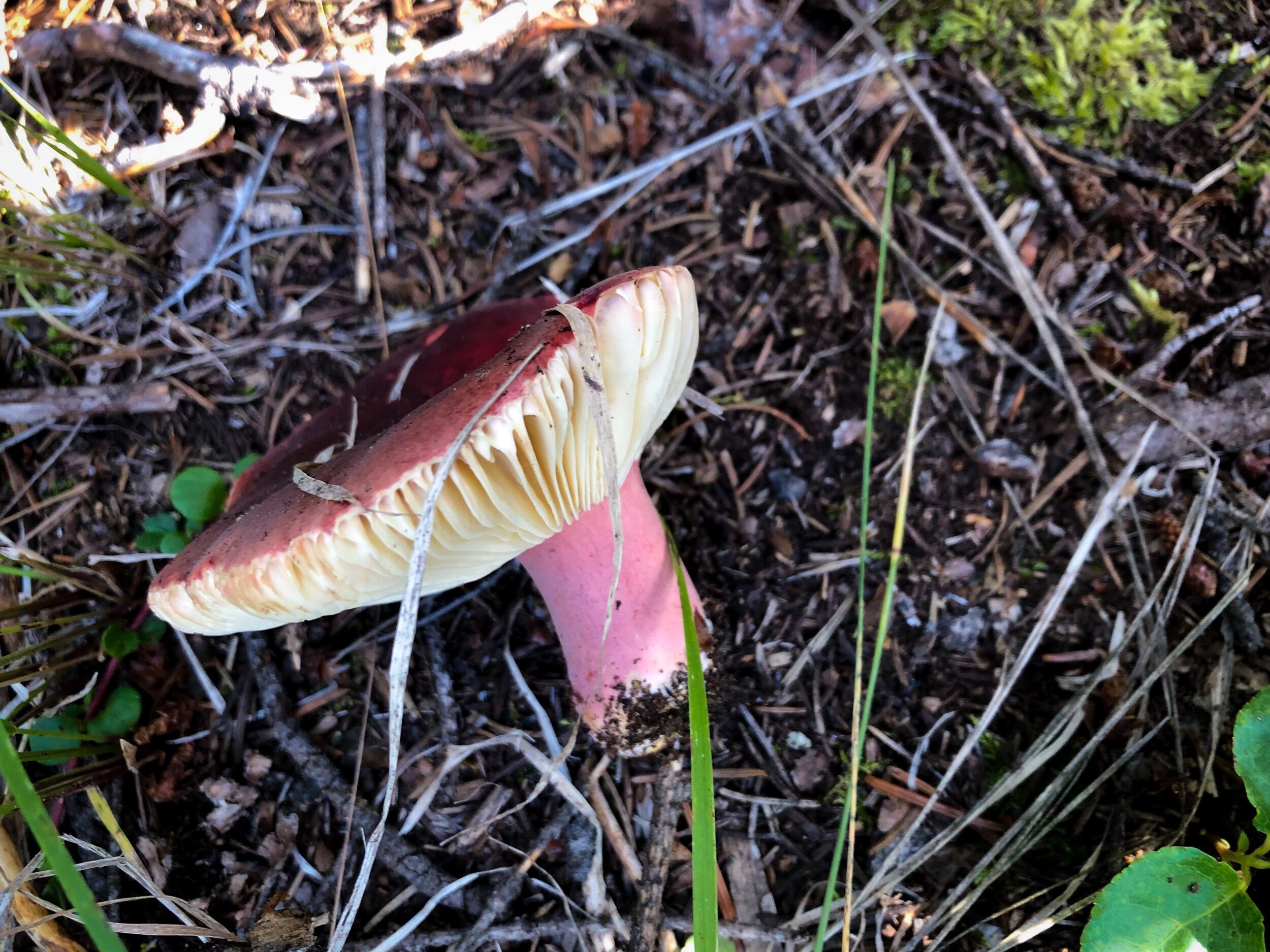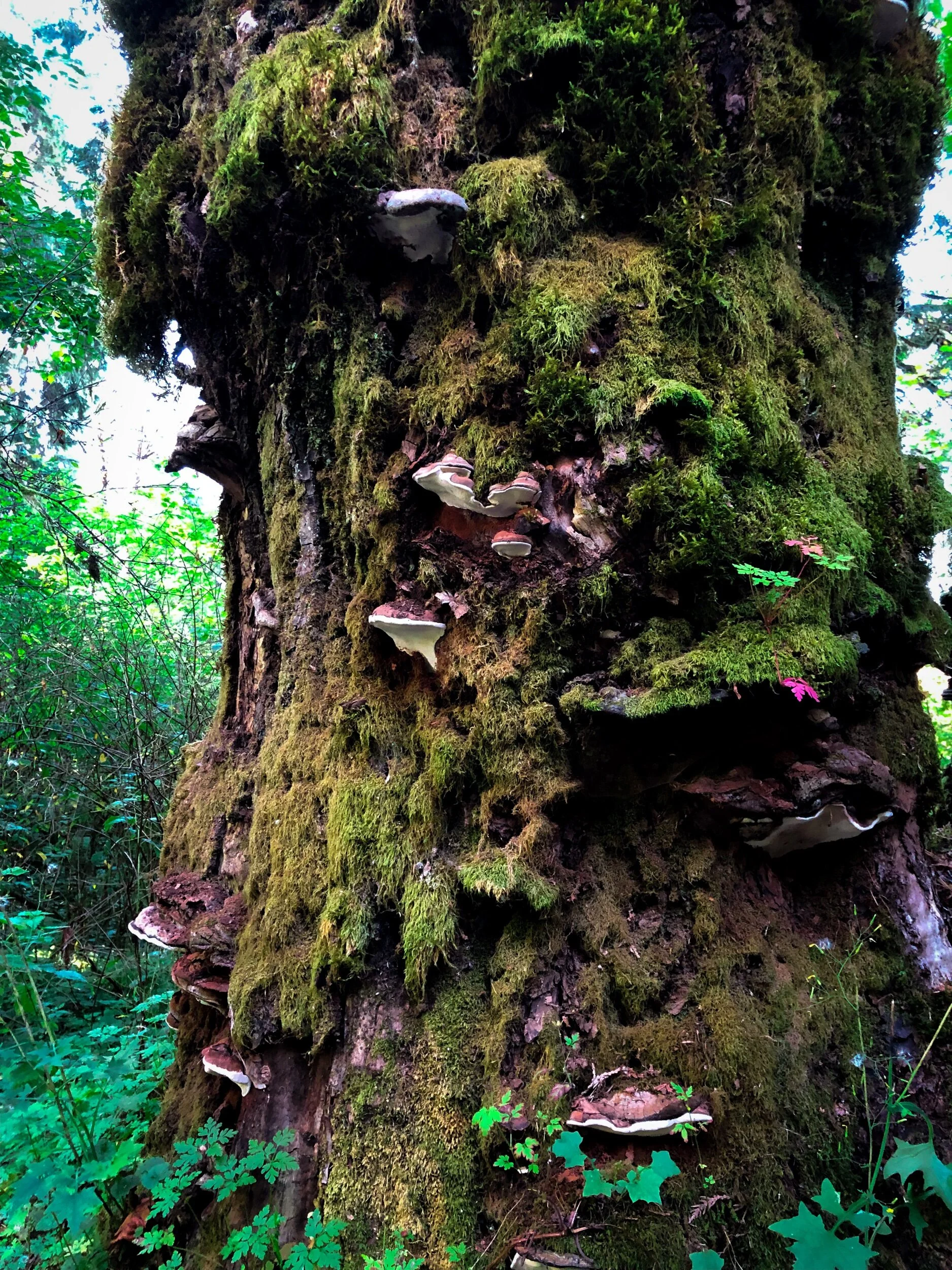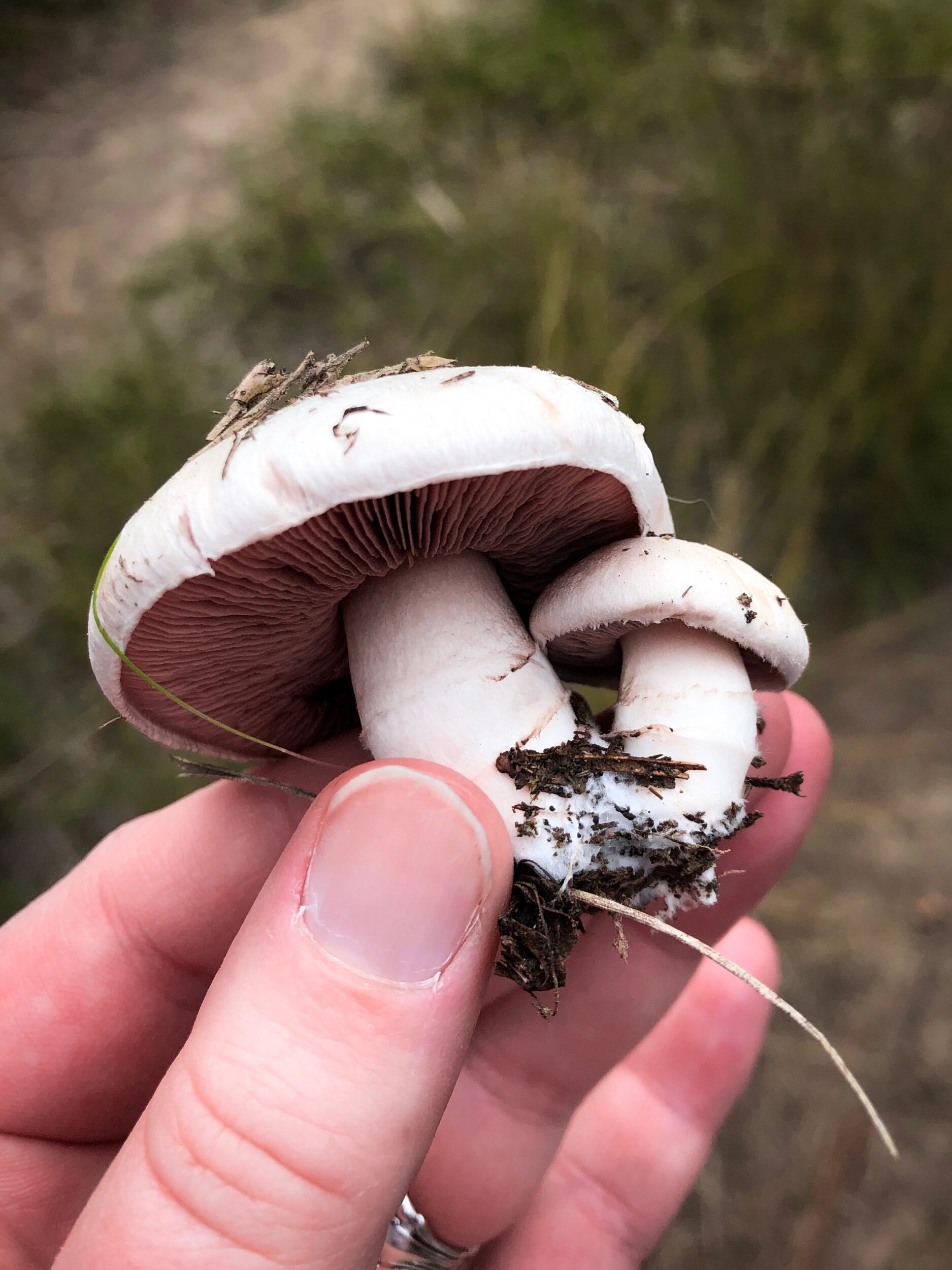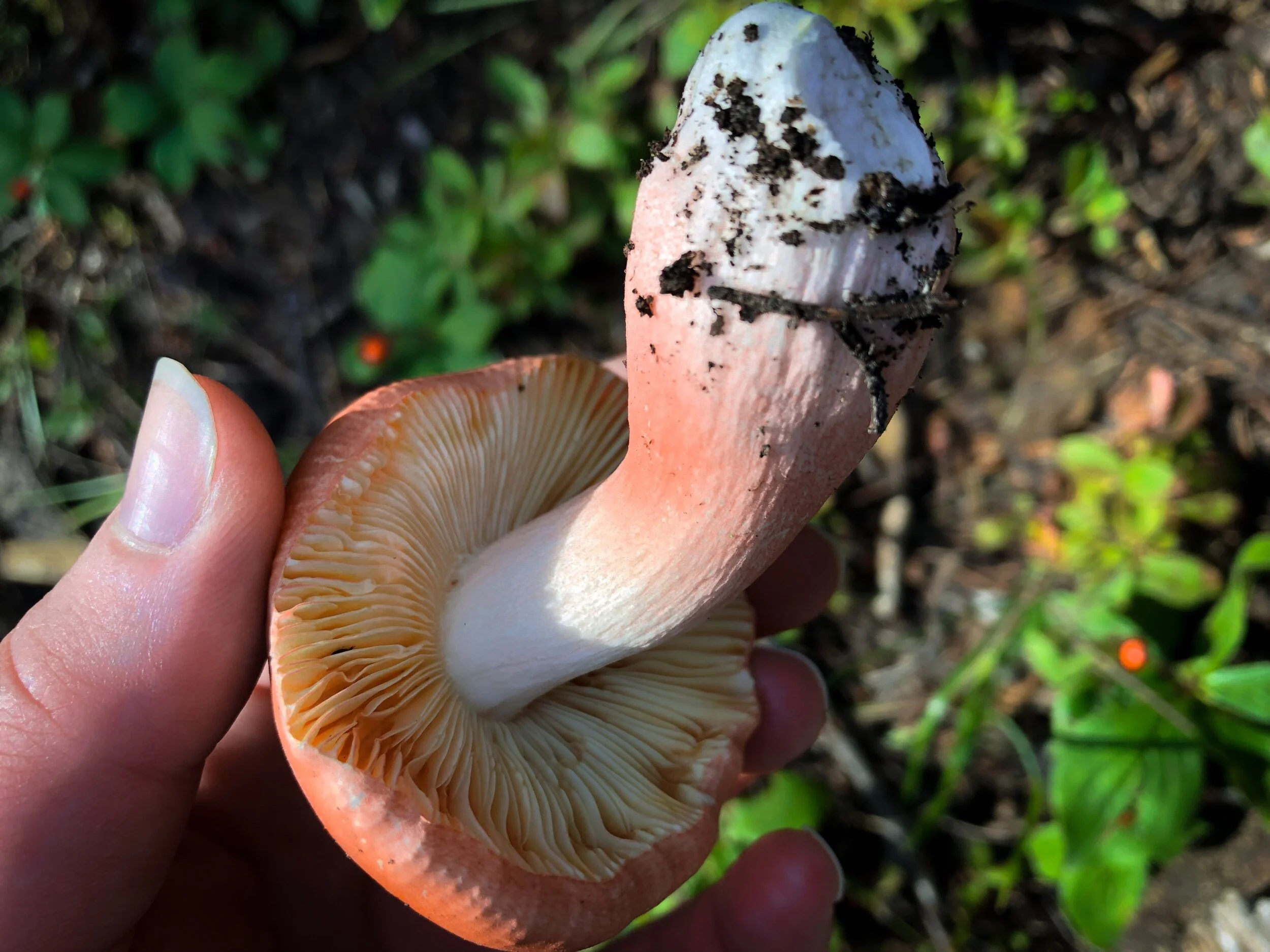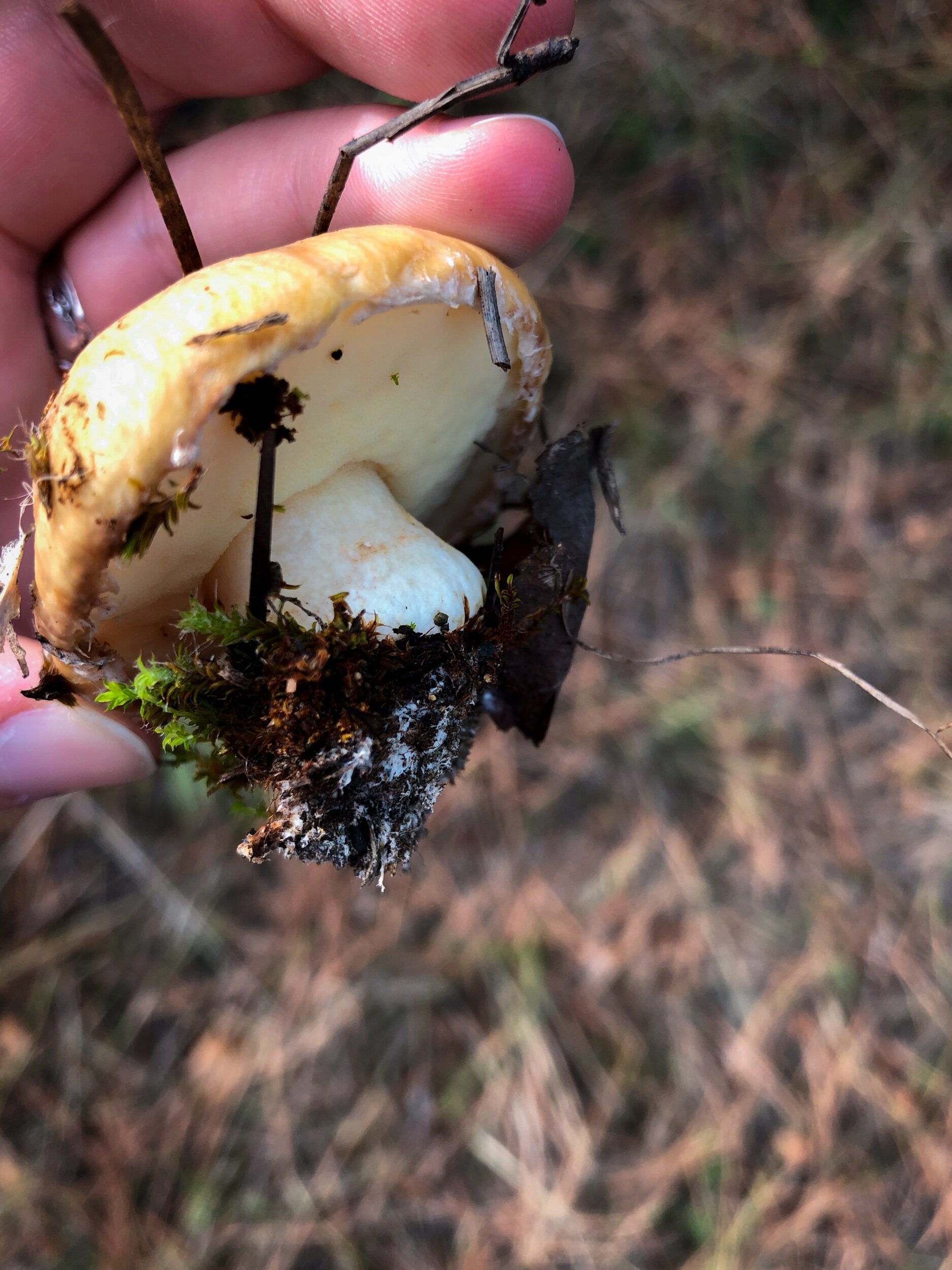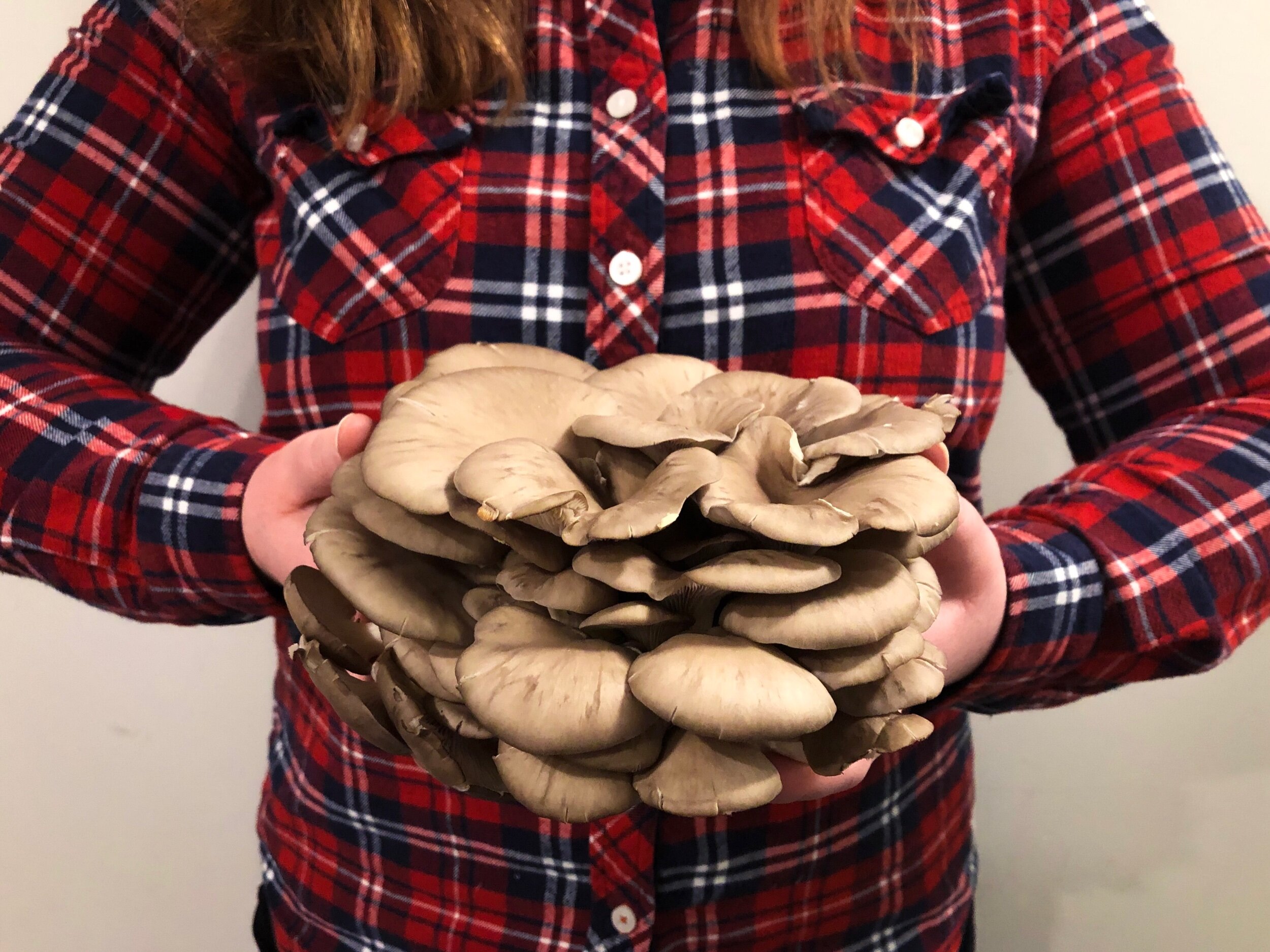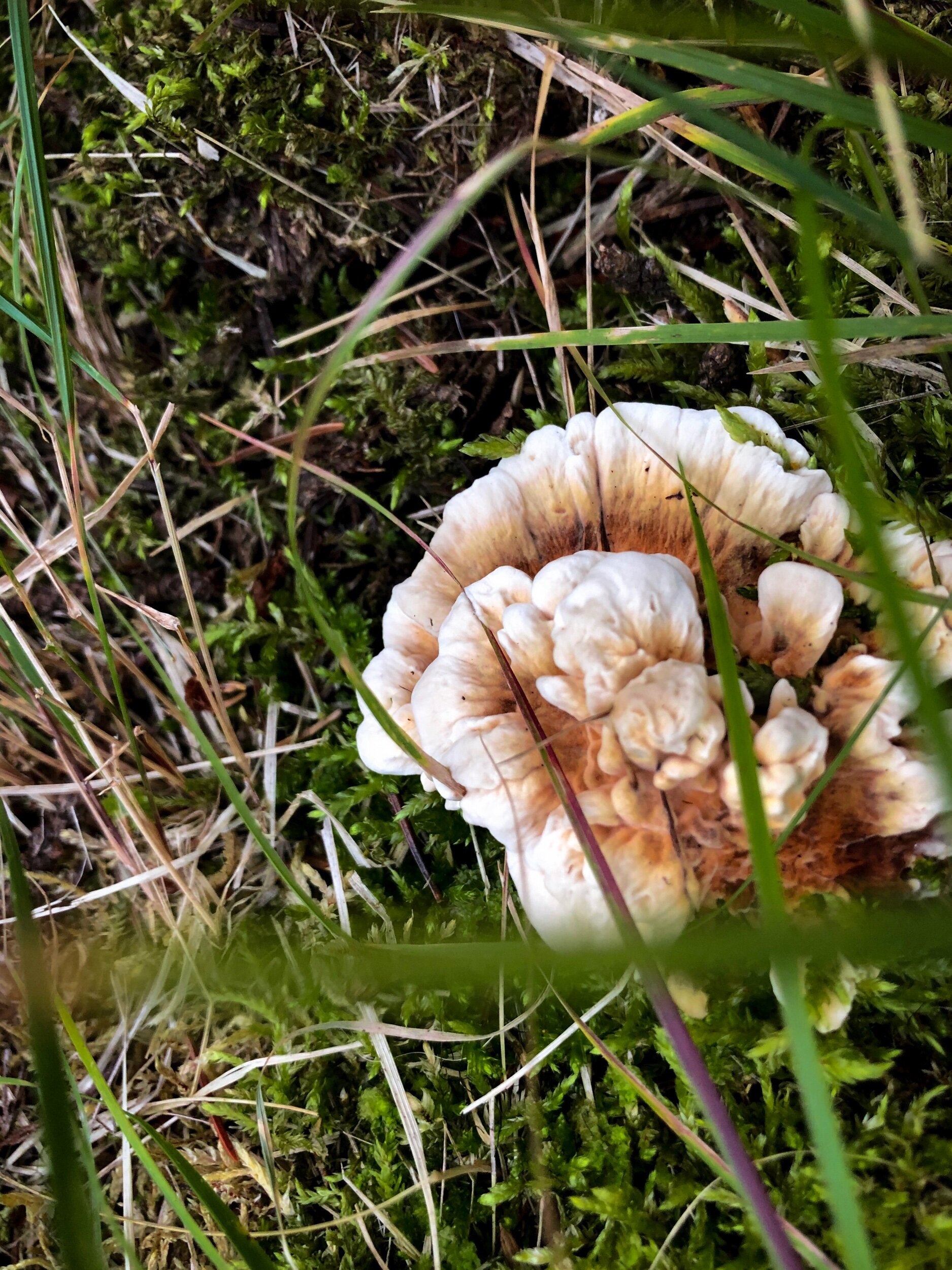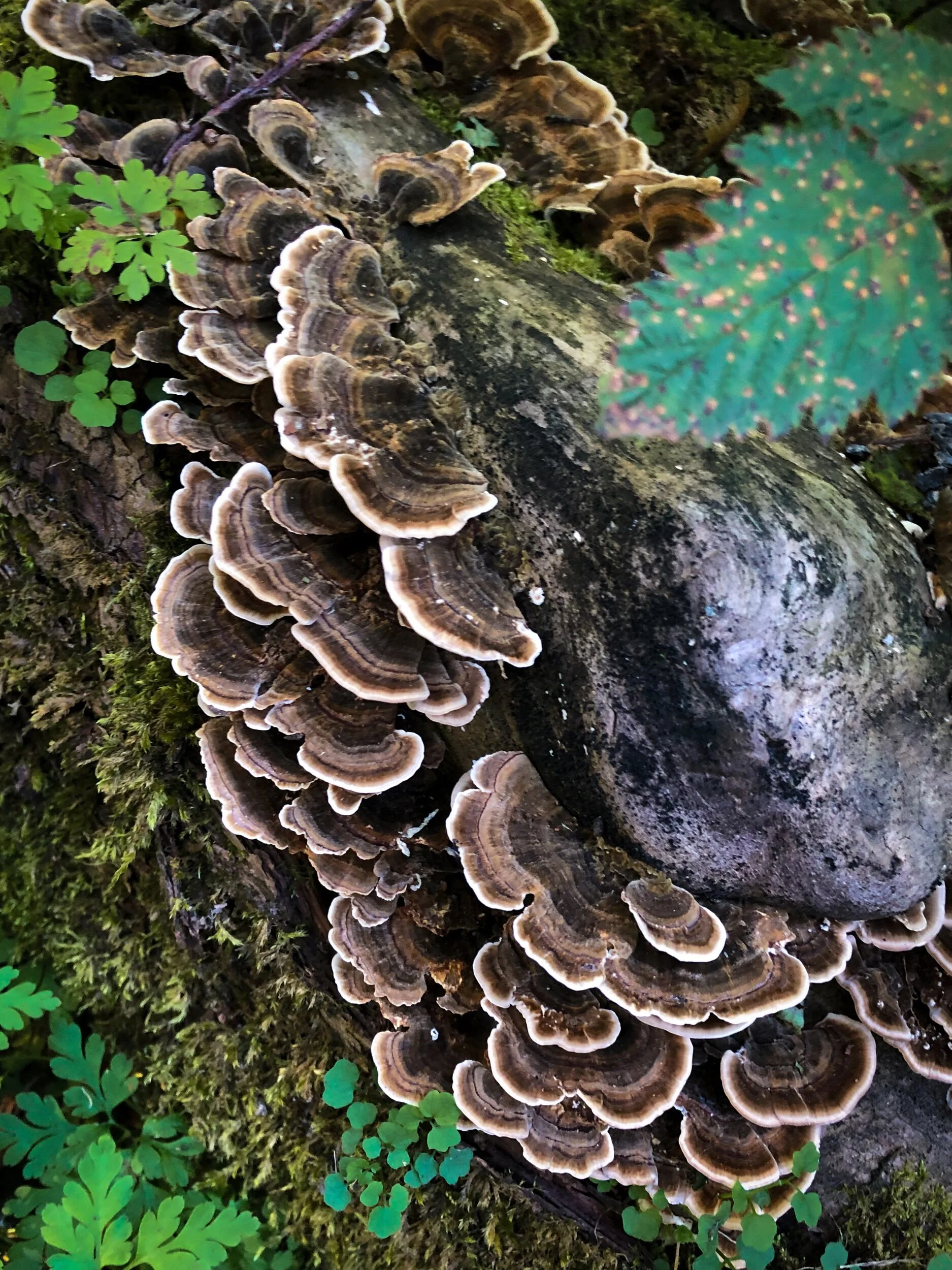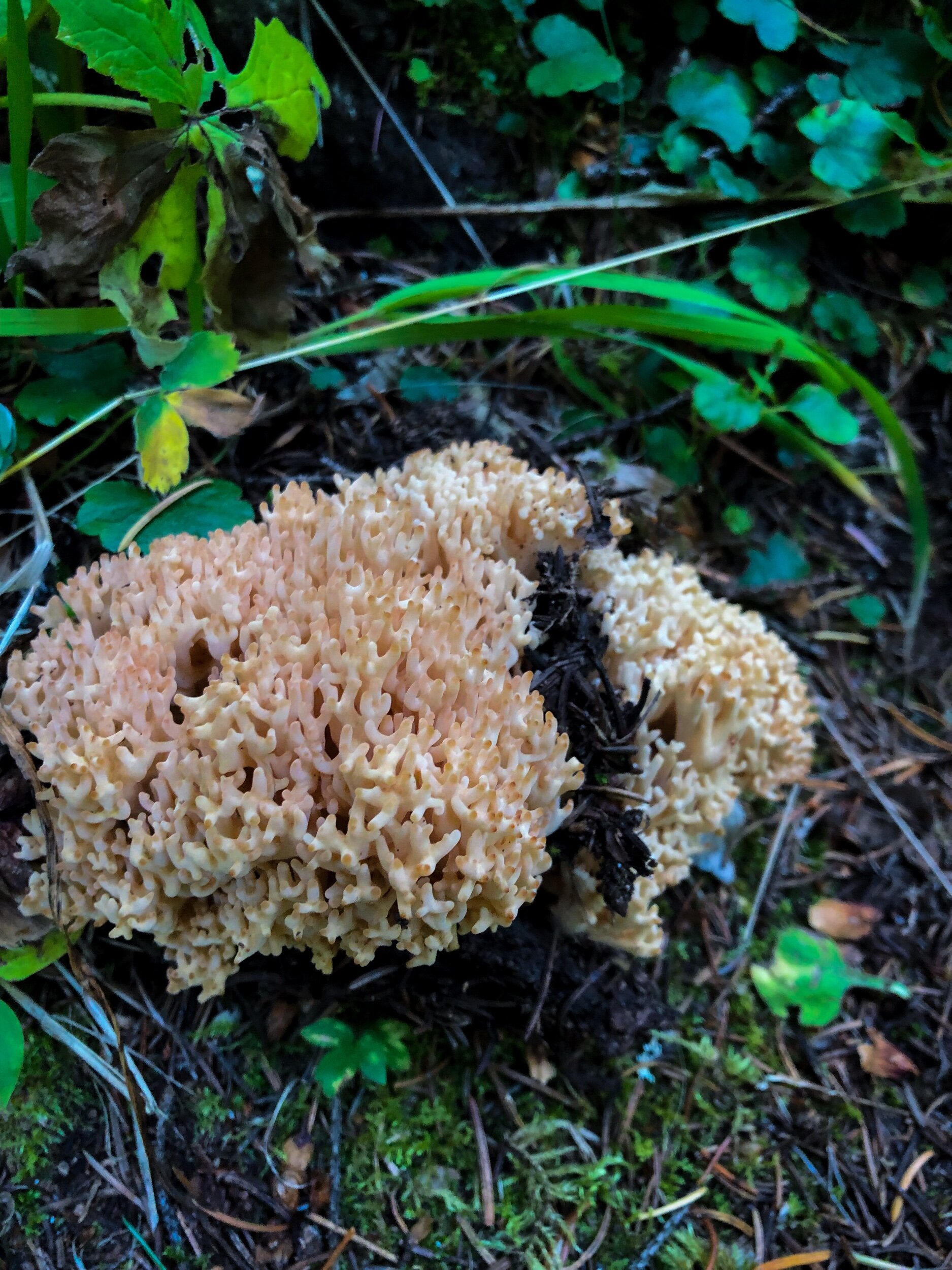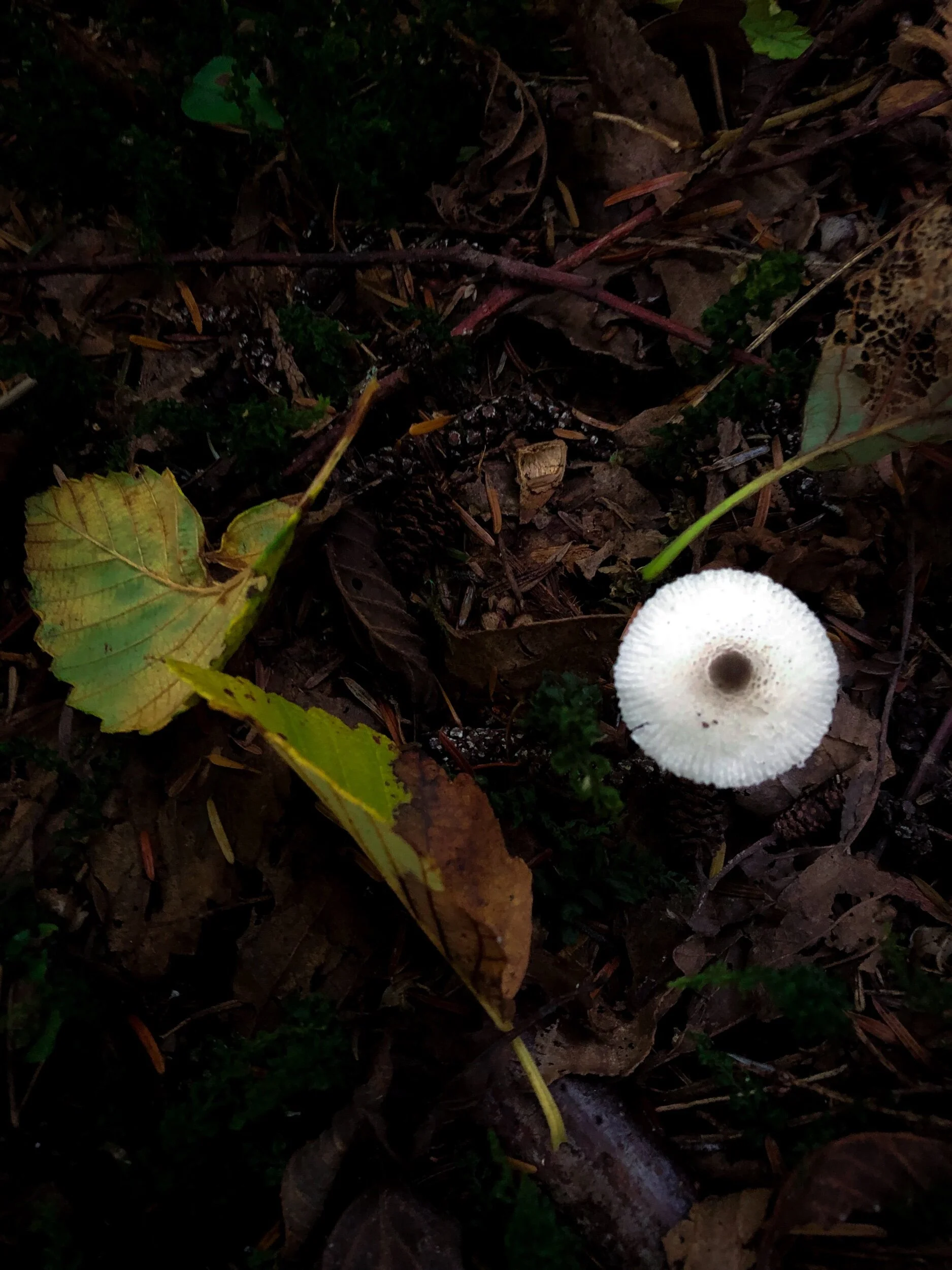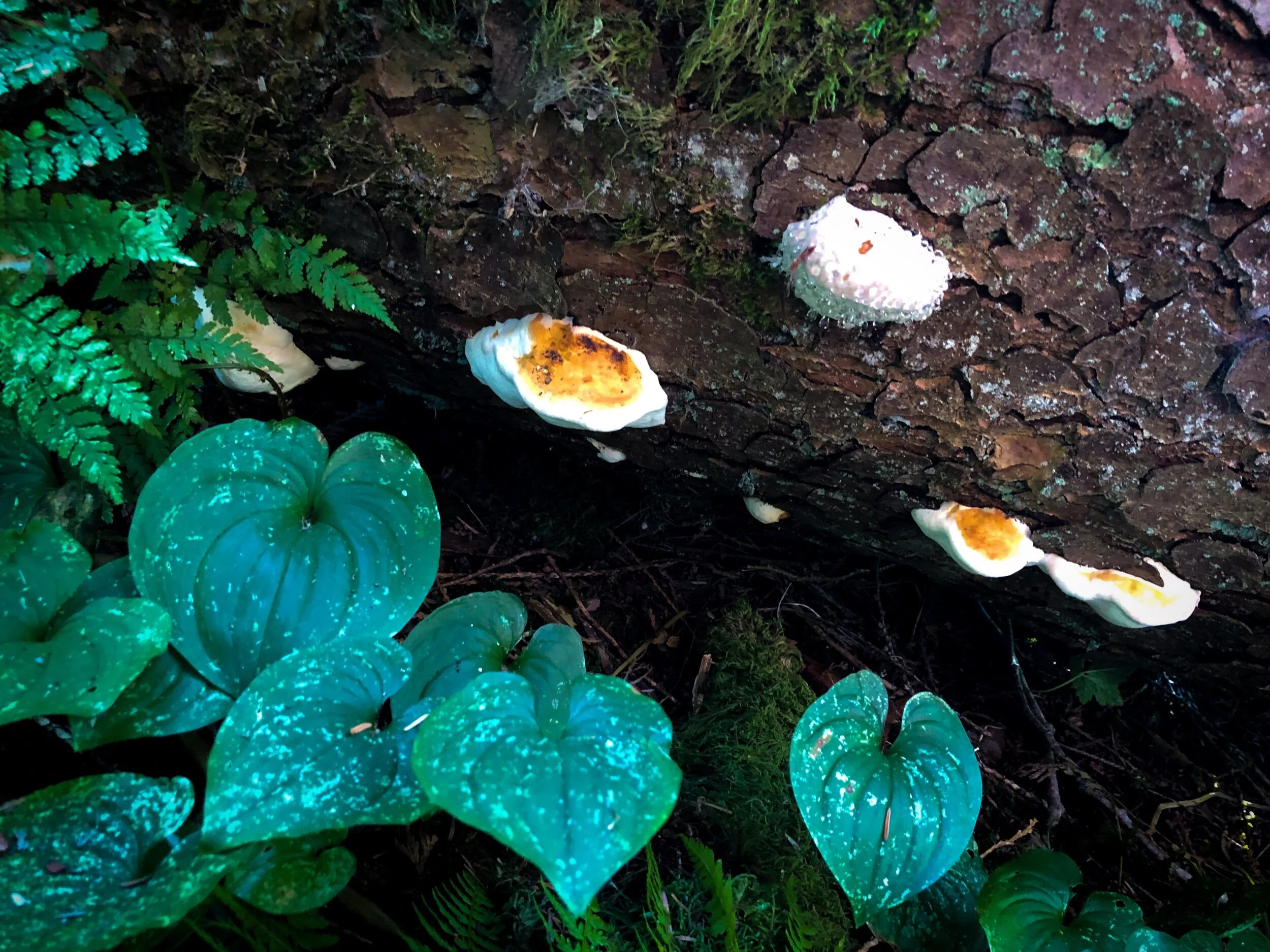A Very Amateur Mycologist
Each January I set aside some time to create a list of gardening and foraging related goals to help focus my year. The list of goals for 2019 included a focus on mushrooms, and lucky for me this was one of the best years possible for it!
Mushroom covered tree in in the Houston Trail in Langley, BC.
Up until this year my experience with wild mushrooms included only what I’ve purchased in farmers markets and gourmet grocery stores. I’ve seen mushrooms growing along trails and in the garden, but never spent a large amount of time observing them or learning very much about them.
The overall weather this year was comparatively wet and mild. We had almost no wildfire smoke this summer so it was perfect for outside adventures, and in the fall it seemed like there were mushrooms popping up everywhere no matter where I looked.
Above: Some unknowns - maybe russula species? Unidentified Agaricus, and a Suillus brevipes (“Short Stemmed Slippery Jack”).
Now that people know I’m interested in wild mushroom hunting I have significantly more articles about fatal mushroom poisonings forwarded to my inbox. Others have actually expressed interest in learning more themselves, and because of that I thought I’d summarize what I’ve learned this season.
Cultivated oyster mushrooms from the Bonneau Family Farm at the Kamloops Farmers’ Market.
Some of the best learning experiences I’ve had were through being a part of the Mushroom Identification Group on Facebook. At this time of year it’s great because there aren’t a lot of mushrooms to be found when the snow starts falling, but there are members in that group from all over the world posting daily, so there is lots of opportunity to study. There are some real experts on that group so it’s a good way to get your feet wet and learn some characteristics to pay attention to when you do get a chance to get outside and see some live specimens.
I also recommend a field guide. Published and officially vetted ones by experienced mycologists are best, but I wouldn’t rule out some trustworthy online sources too. It seems there is still a lot that remains to be discovered in kingdom fungi, and the publication process is a slow one, so some online resources might even be more up to date.
Above: two unknown. Trametes versicolor (“Turkey Tail”), and possibly some type of coral mushroom.
One thing I had hoped to do this year was to find someone experienced to go mushroom hunting with. It seems like that will have to wait for another season. I almost got a chance to go pick shaggy parasol mushrooms with a friend, but the weather and schedules didn’t allow for it. There’s always next year though!
The other thing that has been immensely helpful has just been getting outside and finding and closely observing all the mushrooms I can. My friends in hiking groups always laugh at me because I’m always stopping to pick up whatever fungi I find and taking photos. There is no danger of handling any mushroom. Even the most fatally toxic ones can be handled, and even tasted without issue. All mycotoxins require digestion to cause any harm to a human.
I’ve learned that if you’re taking photos for identification purposes you want to make sure you get one from underneath so the gills are visible, and it sometimes helps to see a cross section. Taking a note of the location you found it and the substrate it was growing on can be important for identification as well, especially if you are posting to the Facebook group or asking someone to help you figure out what you’ve found. There are even some mushrooms where the smell and taste can provide clues. There are some mushrooms that are so difficult to puzzle out that a microscope is necessary, but don’t let that intimidate you. There is so much to learn and experience just by being outside and observing what you find.
Baby mushrooms forming on a fallen log on the Houston Trail in Langley, BC. Does anyone know if that leafy plant is western wild ginger?
One of the best things of all was bringing Little Forager along on some mushroom hunting walks this fall. He’s growing up so fast and walked the entire trail loop (almost) by himself! It’s just so amazing to watch him grow and a real privilege to help him discover the world!
Little Forager triumphantly holds a russula mushroom he found that was bigger than his face. He promptly smashed it to bits which is fine because then the spores get released really well and hopefully even more grow next year!
